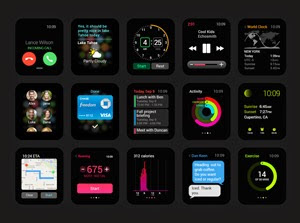Disk Utility User Guide
If you find FAT32 formatting a bit fiddly to use or these instructions a bit hard to follow you should try the replacement for FAT32 format. It is a Windows application with a GUI. MKVToolNix GUI: job queue: the maximum number of jobs to run concurrently can now be increased in the preferences. The default remains at 1; MKVToolNix GUI: the GUI will now add a context-specific default extension to file names selected for saving on platforms that don't add one itself (e.g. Mac OS 8 (39 screenshots) 1999: Mac OS X Server; Mac OS 9 (49 screenshots) 2001: Mac OS X (245 screenshots) 2002: Mac OS X 10.2 Jaguar (47 screenshots) 2003: Mac OS X 10.3 Panther (47 screenshots) 2005: Mac OS X 10.4 Tiger; 2006: Mac OS X 10.5 Leopard. Mac OS X GUI Customization For Dummies 5/36 Introduction acOS X is an amazing operating system. It’s fast, it’s stable, it’s based on unix (bsd roots to be precise) and, best of all, it has a breathtaking interface. The problem is, when you use it every day it can be pretty boring.
In Disk Utility on Mac, you can erase and reformat storage devices to use with your Mac. Erasing a storage device deletes everything on it.
If you have any files you want to save, copy them to another storage device.
Open the Disk Utility app on your Mac using one of the following methods, depending on the type of disk or volume you want to erase:
If you want to erase your startup disk: Start up from macOS Recovery, then choose Disk Utility from the Recovery window.
If you want to erase any other type of storage device: Double-click Disk Utility in the /Applications/Utilities folder.
Choose View > Show All Devices.
In the sidebar, select the storage device you want to erase, then click the Erase button . Permutations of the tree rawn clark pdf.
Click the Scheme pop-up menu, then choose GUID Partition Map.
Click the Format pop-up menu, then choose a file system format.
Enter a name.
(Optional) If available, click Security Options, use the slider to choose how many times to write over the erased data, then click OK.
Secure erase options are available only for some types of storage devices. If the Security Options button is not available, Disk Utility cannot perform a secure erase on the storage device.
Click Erase, then click Done.
Note: With a solid-state drive (SSD), secure erase options are not available in Disk Utility. For more security, consider turning on FileVault encryption when you start using your SSD drive.
As you already know with EL Capitan OS release, Paragon introduced new version of NTFS for Mac with full El Capitan support. Michael jackson greatest hits.
However, this new NTFS for Mac 14 version differs in usage compared to previous versions of Paragon file system driver because in El Capitan apple changed their Disk Utility in a way that NTFS for Mac cannot fuse with it and you cannot see Volumes, mounted with third party drivers in new Disk Utility. Due to this restriction, we implemented functions like mount/unmount, format (Erase), verify and setting volume as startup through Paragon NTFS for Mac 14 GUI.
To access these functions:
– Open NTFS for Mac 14 (System Preferences – NTFS for Mac OS X)
– Select Volumes tab Pip camera app.
– In this Window you can see all volumes detected by your Mac

Gui Format Fat32 Mac
– When volume is mounted with Paragon NTFS for Mac driver it has green circle indicator near it (New Volume, Bootcamp) on above screenshot. NTFS Volumes mounted with other drivers are listed under “Others” (Untitled)
– You can unmount/mount volumes by selecting a volume from the list and pressing “Unmount/Mount” button
– You can set volume as startup (for example Bootcamp if you want to boot with Windows environment) by selecting a volume and pressing “Set as startup” button
– You can verify volumes (check for file system errors) with “Verify” button.
– If you need to format your volume to NTFS, then select a volume from the list and press “Erase(Format)” button
Then select Windows NT file system
Gui Format For Mac

Gui Format Download For Mac
– If you want to mount volume with stock apple driver just check “Disable Paragon NTFS for Mac”
And then unmount/mount volume – it should mount with stock apple driver.
General, NTFS for Mac OS X
Tags: GUI, howto, mac, NTFS for Mac 14
(No Ratings Yet)
Comments are closed.